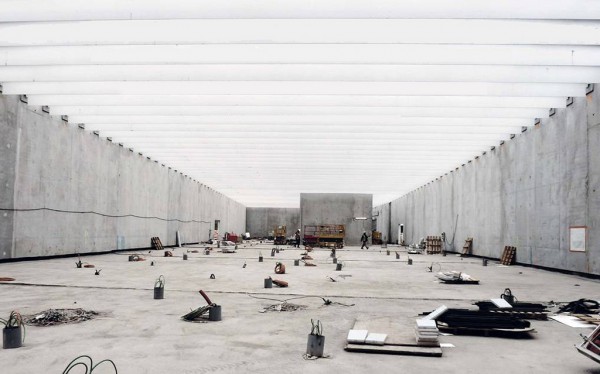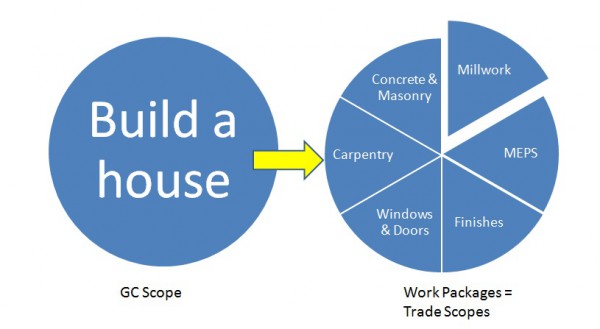1. DEFINITIONS
A Work Breakdown Structure (WBS) is the part of the planning process that creates a description of the units of work (often by trades) required to produce a project, produce cost estimates, and manage the project schedule. It starts at the highest level and then breaks down into progressively smaller units. The smallest unit is called the work package.
Before you can begin your WBS, you must have a full understanding of the project’s scope of work. You must clearly understand what work is to be done, what deliverables are to be turned over, and the timeline which must be followed. After you have this information (sometimes called project requirements), you can begin the process of structuring your WBS.
Q1: How do you define scope of work?
One simple sample of WBS that breaks a project into deliverables that are work packages is shown below. The work package is the lowest level in a WBS hierarchy. At this lowest level, you should be able to comprehend all of the tasks necessary to turn over that deliverable.
A WBS focuses on what is going to be done, not who will be doing it or how. Another way of explaining this is that your WBS will be made up of only nouns, not verbs. For example, as you can see above, the work is broken down into one unit called “carpentry” rather than saying “the carpenter will install…”
The video below demonstrates the format of a WBS:
In this case a project is broken down into different deliverables, which are then broken down into different work packages.
Q2: What is a project deliverable?
The video below uses an airport as example to explain WBS and show its creation:
2. PROCESS
Get planning. To begin creating your own WBS, try the following:
Start with the scope of work for your project.
- Make sure the scope is completely defined, no omissions.
Break down the scope into smaller and smaller units, eventually into ones (work packages) that can be awarded as contracts.
- Identify major work groups (by trade, by contractor, phase, etc.).
- Use sub groups if necessary.
- Make sure each level of the WBS includes units of parallel size and complexity.
- Base the units on work products not work activities.
- Capture 100% of the work of the project (project scope), with no overlap.
- Make sure the lowest units in your breakdown represent unique packages and are small enough that you can comprehend all of the tasks necessary to turn it over (deliver it to your client).
Now begin identifying scheduling considerations. Identify resource needs and dependencies between tasks.
- Begin the schedule and planning tasks.
Your WBS may be used as part of your project schedule, contracting, project tracking, even billing. How does your office incorporate WBS into its projects?





